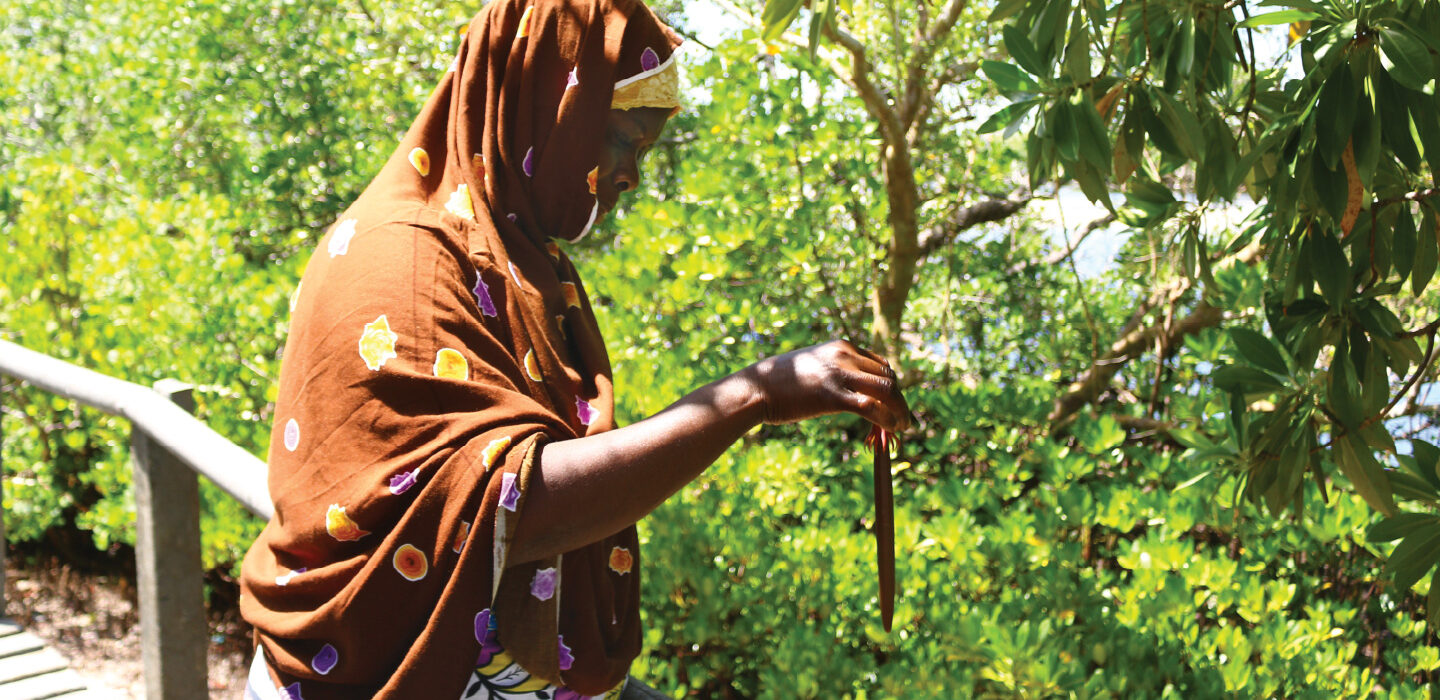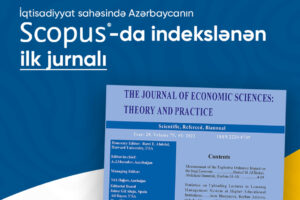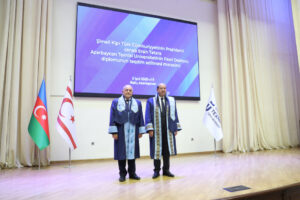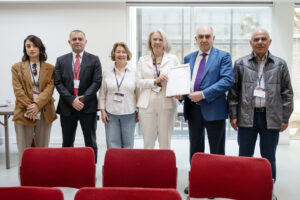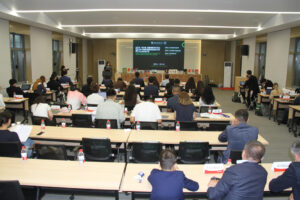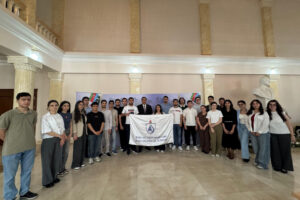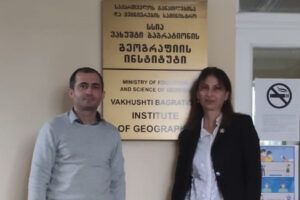Tokyo, 15 September, /AJMEDIA/
On the fringe of Kenya’s Gazi village, 50 kilometers south of Mombasa, Mwatime Hamadi walks barefoot on a path of scorching-hot sand toward a thicket of trees that seem to float where the land meets the Indian Ocean. Behind her moves village life: Mothers carry babies on their backs while they hang laundry between palm trees, women sweep the floors of huts thatched with palm fronds and old men chat idly about bygone days under the shade of mango trees.
Hamadi is on her way to Gazi Forest, a dense patch of mangroves along Gazi Bay that coastal residents see as vital to their future. Mangroves “play a crucial role in safeguarding the marine ecosystem, which in turn is important for fisheries we depend on for our livelihood,” she says as she reaches a boardwalk that snakes through the coastal wetland.
Hamadi is a tour guide with Gazi Ecotourism Ventures, a group dedicated to empowering women and their community through mangrove conservation. This group is part of a larger carbon offset project called Mikoko Pamoja that has taken root and is now being copied farther south on Kenya’s coastline and in Mozambique and Madagascar.
Through Mikoko Pamoja, residents of Gazi and nearby Makongeni are cultivating an economic ecosystem that relies on efforts to preserve and restore the mangrove forests. Revenue from carbon credits sold plus the money Hamadi and others earn from ecotourism are split between salaries, project costs and village improvements to health care, sanitation, schools and more.
Mikoko Pamoja, launched in 2013, is the world’s first mangrove-driven carbon credit initiative. It earned the United Nations’ Equator Prize in 2017, awarded for innovative solutions to poverty that involve conservation and sustainable use of biodiversity.
“The mangrove vegetation was a thriving, healthy ecosystem in precolonial times,” says Ismail Barua, Mikoko Pamoja’s chairperson. During British rule, which stretched from the 1890s to 1963, the colonial government issued licenses to private companies to export mangrove wood. They did this without community involvement, which led to poaching of trees. Even after Kenya gained independence, mangroves were an important source of timber and fuel for industrial processes, main drivers of extensive destruction of the forests.
Today, mangrove restoration is helping the region enter a new chapter, one where labor and resources are well-managed by local communities instead of being exploited. “The community is now able to run its own affairs,” Barua notes. Through innovative solutions and hard work, he says, “we’re trying to bring back a semblance of that ecosystem.”
A fragile carbon sponge
The dominant mangrove species in Gazi Forest is Rhizophora murcronata. With oval, leathery leaves about the size of a child’s palm and spindly branches that reach to the sun, the trees can grow up to 27 meters tall. Their interlaced roots, which grow from the base of the trunk into the saltwater, make these evergreen trees unique.
Salt kills most plants, but mangrove roots separate freshwater from salt for the tree to use. At low tide, the looping roots act like stilts and buttresses, keeping trunks and branches above the waterline and dry. Speckling these roots are thousands of specialized pores, or lenticels. The lenticels open to absorb gases from the atmosphere when exposed, but seal tight at high tide, keeping the mangrove from drowning.
The thickets of roots also prevent soil erosion and buffer coastlines against tropical storms. Within these roots and branches, shorebirds and fish — and in some places, manatees and dolphins — thrive.
Mangrove roots support an ecosystem that stores four times as much carbon as inland forests. That’s because the saltwater slows decomposition of organic matter, says Kipkorir Lang’at, a principal scientist at the Kenya Marine and Fisheries Research Institute, or KMFRI. So when mangrove plants and animals die, their carbon gets trapped in thick soils. As long as mangroves stay standing, the carbon stays in the soil.
Robust estimates of mangrove forest area in Kenya before 1980 are not available, Lang’at says. However, with the clear-cutting of mangrove forests in Gazi Bay in the 1970s, he says, the area was left with vast expanses of bare, sandy coast.
Other parts of the country experienced similar losses: Kenya lost up to 20 percent of its mangrove forests between 1985 and 2009 because no mechanism existed for their protection. The losses had a steep price: Just as mangroves absorb more carbon than inland forests, when destroyed, they release more carbon than other forests. And since the mangroves provided habitat and shelter for fish, their destruction meant that fishers were catching less.
Recognizing this high cost, as well as the ecosystem’s other benefits, Kenya’s government ratified the Forest Conservation and Management Act of 2016, a law protecting mangroves and inland forests. Cutting down mangroves is now banned throughout the country, except in very specific areas under very specific circumstances.
Available data suggest that Kenya’s rate of mangrove loss has declined in the last two decades. The country is now losing about 0.65 percent of its mangrove forest annually, according to unpublished evaluations conducted in 2020 by KMFRI. Since the turn of the millennium, global mangrove deforestation has slowed as well, hovering between a loss of 0.2 and 0.7 percent per year, says a 2020 study in Scientific Reports.
Mikoko Pamoja offers hope for turning around those declines. The project, whose Swahili name means “mangroves together,” has its roots in a small mangrove restoration effort that started in 1991 in Gazi Bay, spearheaded by KMFRI. The effort evolved into a scientific experiment to see what it would take to restore a degraded ecosystem. It attracted collaborators from Edinburgh Napier University, Europe’s Earthwatch Institute and other organizations across Europe.
Now, Gazi Forest boasts 615 hectares of mangrove forest, including 56,000 individual seedlings planted by the community. Plans to plant more mangrove trees — at least 2,000 per year — are in the works.

